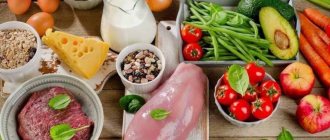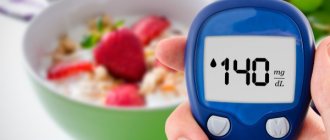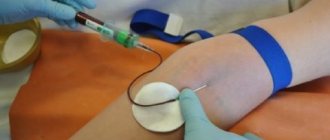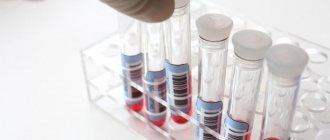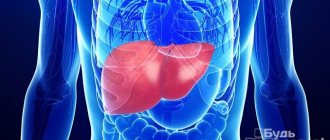This article will discuss in detail a topic that is important for people suffering from diabetes. How to lower blood sugar while at home, what foods to eat in order to see a good result on the glucometer screen, how to use traditional medicine methods so as not to harm your health - you can find out by reading the information below.
Medicinal methods to combat diabetes
Foods that reduce high glucose levels
It is possible to normalize blood sugar concentrations without the use of medications.
A well-chosen menu that includes foods that lower blood sugar will help stabilize glucose levels. Glycemic index (GI) is an indicator that reflects the effect of carbohydrates in foods on changes in blood sugar levels after consumption.
This is what you need to focus on in order to understand which foods quickly and effectively lower blood sugar. It is the main guideline when choosing the components of a healthy diet.
There are no products that literally lower blood sugar. There are only foods that simply do not increase glucose levels.
Any raw vegetables, stewed or boiled, can be considered products that, if they do not reduce, then certainly do not lead to a rapid and strong increase in its level in the blood.
A diet designed to reduce glycemia does not involve the use of some expensive or exotic food. Products that quickly and effectively lower blood sugar are available in almost every home.
To create the right menu that will help reduce glycemia, you need to take into account the glycemic index of foods. The maximum GI is 100, which is considered pure glucose.
The lower the glycemic index and number of bread units (XE) of a product, the slower the rise in blood sugar after consumption. Glucose balance is also restored quite quickly.
This is how grain units are counted
A bread unit is a conventional indicator used to determine the approximate amount of carbohydrates in products. 1 XE is approximately equal to 10-13 grams of carbohydrates. Counting bread units is paramount in ensuring control over GI in diabetes mellitus.
For glycemia, it is recommended to know which foods lower blood sugar. In this case, you should approach food intake by adhering to certain rules:
- Compliance with the diet - you should eat at the same time every day.
- Fractional meals - the daily portion of food is divided into 5-6 meals.
- Eating foods high in fiber - beans, peas.
- The predominance of vegetables in the daily menu.
- The calorie content of the foods consumed should be average.
- Adding milk and dairy dishes to the diet.
- Drink enough fluid – 1.5 – 2 liters per day.
- If you deviate from your usual diet for more than 1 hour, you should eat a slice of bread, any fruit (sour) or drink 200-250 ml of juice.
- Exclusion from the diet of alcoholic beverages.
- Control of the salt regime, in the direction of reducing salt.
- Limit fried, spicy, smoked foods.
- Exclusion from the daily menu of fatty, high-carbohydrate foods.
- Minimizing the consumption of animal fats.
- Presence of vitamins in the menu.
If your blood sugar is high, it is recommended to exclude high-carbohydrate foods from your usual diet.
Glycemic index table
It is very useful to know which foods lower blood sugar when its content is high. Let's take a closer look at what foods will help effectively fight glycemia. The table below provides a list of foods that lower blood sugar. They can be used almost without fear by people suffering from glycemia.
| Glycemic index | Food |
| 0 — 14 | Parsley, basil, oregano, lettuce (leaf and lettuce), avocado, white cabbage, tomatoes, onions, eggplant, mushrooms |
| 15 — 29 | Plum, cherry, cherries, prunes, lemon, grapefruit, gooseberries, cranberries, nuts (peanuts, pine nuts, almonds, hazelnuts), pistachios, pumpkin seeds, fresh and pickled cucumbers, onions (onions and leeks), cabbage (Brussels sprouts, cauliflower, broccoli), kefir |
| 30 — 39 | Pears, apples (fresh and dry), currants, peaches, raspberries, dried apricots, spinach, legumes (peas, beans, beans, soybeans, lentils), whole grain bread, skim milk, milk chocolate |
Heat processing of some foods increases their glycemic index. This applies to beets, potatoes, carrots, and beans, while nothing affects apples, cabbage, fish, and seafood.
Causes and symptoms of high sugar
Impaired glucose tolerance, insufficient insulin production, and impaired functionality of the islets of Langregans in the pancreas cause metabolic disorders and hyperglycemia. The more provoking factors, the higher the risk of damage to the endocrine gland.
The main causes of insulin-dependent and non-insulin-dependent diabetes:
- hereditary predisposition;
- excess in the diet of foods with “fast” (simple) carbohydrates. Diabetes mellitus often develops when eating baked goods, white bread, sweets, milk chocolate, flour and pasta products, potatoes, jam, fast food;
- overwork, stress, lack of sleep, sleep deficiency;
- metabolic syndrome;
- tumor process in the pituitary gland;
- low level of physical activity;
- alcoholism, drug addiction, smoking;
- pathologies of the liver, pancreas and thyroid glands;
- hormonal imbalance, especially in women during menopause;
- metabolic disorders with the accumulation of extra pounds.
Specific symptoms of diabetes:
- excessive dryness of the skin and mucous membranes;
- urination is higher than normal;
- I'm constantly thirsty.
Find out the rules and features of treating the pancreas with medications.
A page is written about the structure of the human endocrine system, diseases and methods of their treatment.
Additional signs of diabetes:
- poor healing of skin wounds;
- blurred vision;
- arterial hypertension;
- loss of appetite;
- weight loss or gain, more often obesity. Sudden weight loss is a sign of severe damage to the pancreas;
- decreased libido and potency in men;
- vaginal candidiasis in women;
- drowsiness, loss of strength;
- excessive sweating;
- increased fatigue even at low loads;
- irritability, mood swings for no particular reason.
Alternative medicine tips
Traditional healers recommend recipes made from natural ingredients to combat excess blood sugar. These are mainly vegetables and fruits that speed up metabolism. Excellent helpers in non-drug treatment:
- oysters, wheat germ and brewer's yeast (3 times a day, 2 tsp) due to their zinc content;
- blueberries, bird cherry, sour apples (3-4 pieces daily), fresh cucumbers, onions and peppers;
- fresh Jerusalem artichoke salad or powder from it (1 tsp each);
- warm tea from brewed blueberry leaves (pour 1 tsp of chopped leaves into a glass of boiling water, strain after half an hour, drink a third of a glass three times a day), wild strawberries and raspberries;
- infusion of bay leaf (brew 10 leaves in a 0.3 liter thermos and leave for a day) – drink a course of 2 weeks, 50 ml 30 minutes before meals;
- turmeric infusion (a pinch per glass of boiling water) – take twice a day;
- fresh homemade kefir with cinnamon (course 2 weeks);
- ground buckwheat swollen in kefir for 12 hours (2 tbsp) - consume one hour before meals;
- pear juice (3 times a day, 50 ml for 2-3 weeks) and fresh watermelon (125 ml twice a day);
- fresh vegetable juices from cabbage, radish, potatoes (100 ml twice a day, half an hour before meals), beets (half a tablespoon 4 times a day), carrots, pumpkin, zucchini or tomatoes.
The choice of folk remedy must be agreed upon with the attending physician. Only he can determine what indications and contraindications there may be, especially during pregnancy.
Following a properly selected diet will allow you to maintain a consistently normal blood sugar level, improve your well-being, and avoid threatening complications from excess glucose during pregnancy and diabetes.
What foods will help normalize sugar?
It must be said that foods cannot directly lower blood sugar. However, with constant consumption of certain groups of food, it is possible to achieve its stable level. They mainly reduce the absorption of sugar into the blood, thereby achieving compensation for the disease. These are foods with a low and medium glycemic index.
All products are divided into 3 groups: high, medium and low glycemic index. Sugar-lowering products belong to the last two groups.
These food groups lower blood sugar:
- Seafood – they have a low GI. They contain no carbohydrates, so sugar levels practically do not rise.
- Vegetables, fruits, and greens are rich in fiber, which helps normalize digestion and prevent glucose absorption. Citrus fruits are very useful, for example, lemon blocks the absorption of glucose, grapefruit increases the effect of insulin.
- Special mention should be made of Jerusalem artichoke . Its root contains a substance similar in composition to insulin. It helps maintain the required level of glucose in the body.
- Nuts also slow down the absorption of glucose, however, they are high in calories.
- Cereals, grains, and legumes are rich in fiber.
- Spices. If you take, for example, a quarter teaspoon of cinnamon daily, the level will remain within normal limits.
- Another special product is garlic. It stimulates the pancreas and increases insulin production.
By adhering to a diet, eating foods with low and medium GI, you can keep your levels within normal limits for a long time. Another important point is counting bread units for each meal (for type 1 diabetics). It is according to this indicator that the dose of insulin or the number of tablets taken is adjusted.
Diabetics should learn foods with their glycemic index. This table with low and medium values (and also with foods that do not have GI) will help lower sugar levels in diabetes.
| Product group | Product names | No GI | Average GI | Low GI |
| Vegetables | Parsley | — | — | 5 |
| Leaf lettuce | — | — | 8 | |
| Tomatoes | — | — | 12 | |
| Bulb onions | — | — | 11 | |
| Broccoli | — | — | 10 | |
| Cabbage | — | — | 9 | |
| cucumbers | — | — | 20 | |
| Sweet green/red pepper | — | — | 10/15 | |
| Radish | — | — | 16 | |
| Olives | — | — | 15 | |
| Green onion | — | — | 10 | |
| Dill | — | — | 12 | |
| Carrot | — | — | 35 | |
| Beans | — | — | 40 | |
| Eggplant caviar | — | — | 40 | |
| Green pea | — | — | 40 | |
| Beet | — | 64 | — | |
| Vegetable stew | — | 55 | — | |
| Boiled potatoes | — | 65 | — | |
| Garlic | — | — | 30 | |
| Lentils | — | — | 25 | |
| Fruits, berries | Apricot | — | — | 20 |
| Plum | — | — | 22 | |
| Cherry | — | — | 23 | |
| Grapefruit | — | — | 22 | |
| Pomegranate | — | — | 35 | |
| Pear | — | — | 34 | |
| Peaches | — | — | 32 | |
| Apples | — | — | 32 | |
| Raspberries | — | — | 30 | |
| Lemon | — | — | 20 | |
| Mandarin | — | — | 40 | |
| Cowberry | — | — | 25 | |
| Strawberry | — | — | 33 | |
| Cranberry | — | — | 46 | |
| Gooseberry | — | — | 40 | |
| Red/black currant | — | — | 30/15 | |
| Blueberry | — | — | 43 | |
| Kiwi | — | 50 | — | |
| Melon | — | 60 | — | |
| Dried fruits | Dried apricots | — | — | 30 |
| Prunes | — | — | 25 | |
| Figs | — | — | 36 | |
| Raisin | — | 65 | — | |
| Dairy | Cottage cheese | — | — | 30 |
| Cream 10% | — | — | 30 | |
| Sour cream 20% | — | 56 | — | |
| Kefir | — | — | 25 | |
| Milk | — | — | 27 | |
| Hard cheese | No GI | — | — | |
| Brynza, Suluguni | No GI | — | — | |
| Yogurt 1.5% without sugar | — | — | 35 | |
| Processed cheese | — | 57 | — | |
| Meat and fish products, poultry | Beef | No GI | — | — |
| Mutton | No GI | — | — | |
| Turkey, chicken | No GI | — | — | |
| Pork | No GI | — | — | |
| Squid, crabs | No GI | — | — | |
| Fish, including salted and smoked | No GI | — | — | |
| Sea kale | — | — | 22 | |
| Dumplings | — | 60 | — | |
| Fish cutlets | — | 50 | — | |
| Liver | — | 50 | — | |
| Meat cutlets | — | 50 | — | |
| Omelette | — | — | 49 | |
| Sausages | — | — | 28 | |
| Cereals | Buckwheat | — | 50 | — |
| Pearl barley | — | 50 | — | |
| Oatmeal | — | — | 40 | |
| Barley | — | — | 45 | |
| Oatmeal | — | — | 30 | |
| Brown rice | — | 55 | — | |
| Flour products | Pasta | — | 50 | — |
| Grain bread | — | — | 42 | |
| Vareniki | — | 60 | — | |
| Pizza | — | 60 | — | |
| Pancakes | — | 69 | — | |
| Rye-wheat bread | — | 64 | — | |
| Bread | — | — | 43 |
This list of foods that lower blood glucose is recommended by the global community of endocrinologists. It is compiled taking into account the indicators of patients with type 1 and type 2 diabetes.
The patient's health depends primarily on himself, on how.
Diabetes school has a great influence on the course of the disease , which I recommend that all patients diagnosed with diabetes mellitus take.
There is a special diet to control sugar. By sticking to it and using foods with a low glycemic index for cooking, you can achieve good compensation. Of course, sometimes you want to eat something forbidden and sometimes you can afford it, but only sometimes. You can find out which foods increase sugar levels from this.
As for foods that quickly lower blood sugar, I’m a little disappointed. They do not have an immediate effect of lowering glucose. There are foods that stimulate insulin production or slow down the absorption of glucose into the blood.
Adjustments in nutrition
Products allowed in the diet
Diet No. 9 is suitable for patients with diabetes. It is based on reducing carbohydrate foods in the menu. It is allowed to eat a certain amount of ingredients rich in complex carbohydrates, mainly focusing on protein foods. But it is worth noting that nutrition should be balanced and healthy.
A very important indicator is the glycemic index (GI) when choosing foods. The higher the GI, the faster your sugar levels will rise, so you should choose foods with a low index.
A “newbie” may be confused about the question of how to eat to lower blood sugar?
It is difficult to rebuild the body for a new life, to give up familiar, favorite foods. In such cases, doctors advise you to first remember a few rules that will lay the foundation for nutrition. Once you understand the key points, you can gradually cleanse your diet by listening to your body.
It is forbidden to consume fast food products
- Complete rejection of harmful products - sweets, sugar, fast food, soda, industrial sauces, canned food, flour and confectionery.
- Reduce the amount of carbohydrates to 30 g per day, dividing them into several meals.
- Carefully study the composition of the ingredient for the presence of sugar. Such products should also be put aside.
- Exclude products with saturated fats from food - fatty meat, butter, fatty dairy products. Replace vegetable oil with olive oil when preparing salads.
- Eat food prepared primarily by boiling, baking, steaming, or stewing. Avoid fried, smoked and salty foods.
- Drink plenty of water.
- You need to eat according to a schedule, at least 6 times a day, in small portions.
Proper diet for a diabetic
There is a list of ingredients suitable for a diabetic. There are enough of them to provide a varied diet, so don’t be upset about it.
It is much more important to adhere to therapy without pills, with the help of approved nutrition:
- seafood;
- low-fat fish;
- lean meat, poultry;
- mushrooms;
- cereals (except rice and semolina) and legumes;
- pasta from durum wheat (rare);
- berries (except raspberries);
- vegetables (except potatoes);
- fruits (except grapes, bananas);
- nuts;
- low-fat dairy products without additives;
- low-fat cheeses.
Green vegetables benefit the body
Among the general list, there are ingredients that can lower sugar levels if consumed frequently.
What foods can lower blood sugar:
- green vegetables (spinach, green beans, cauliflower, broccoli, green peas);
- seafood;
- unsweetened fruits (green apples, lemon, grapefruit);
- greenery;
- tomatoes;
- spices (cinnamon).
Sample menu for lowering glucose values
One of the healthy food options
The table below shows a menu for one day, which consists of dishes containing a low glycemic index. This diet will help reduce sugar levels, and with constant use, maintain normal levels for a long time.
Table - Menu for 1 day for a diabetic:
| Eating | Dish | Amount, g/ml |
| Breakfast #1 | Buckwheat porridge | 200 |
| Black tea | 200 | |
| Egg | 80 | |
| Bread | 20 | |
| Breakfast No. 2 | Green apple | 100 |
| Dinner | Mushroom soup | 250 |
| Steamed broccoli | 150 | |
| Boiled chicken breast | 80 | |
| Rose hip decoction | 200 | |
| Bread | 30 | |
| Afternoon snack | Natural yogurt | 150 |
| Dinner | Vegetable stew | 150 |
| Baked fish | 80 | |
| Black tea | 200 | |
| Late dinner | Fresh cucumber and herb salad | 150 |
What foods will you love to lower your blood sugar levels?
The diet is considered correct if it includes foods that facilitate the functioning of the pancreas. These are foods that lower blood sugar.
In proportion to the hypoglycemic index, which determines the degree of increase in blood sugar from the food eaten, all foods are conventionally divided into 3 groups.
The lower the digital index, the safer the product is for people at risk, whose sugar is higher than normal, and for patients with diabetes.
Products with an index over 70
This is the highest level. These foods raise blood sugar levels. You should stay away from this group. This includes all types of sweets, pastries, candy in any form, milk chocolate, even wheat bread, honey and everything that contains honey, dessert dishes with and without cream, pasta, dishes from the menu of fast food cafes, sweet fruits, sweet boiled vegetables, potatoes, dates, beer, even non-alcoholic, juices, round rice, millet, pearl barley and semolina.
Reasonable consumption of sugar will reduce its concentration in the blood
Sugar is a fast carbohydrate, its GI = 75. When it enters the body, it causes a sharp rise in the concentration of glucose in the blood. We consume sugar both in its pure form, adding it to drinks and food (for example, sweetening porridge), and by consuming sweet desserts.
If you are concerned about how to lower your blood sugar, you should completely eliminate sugar from your diet. This will cause some discomfort at first, but gradually you will change your eating habits.
Stevia herb will help those with a sweet tooth at first. This plant has a sweet taste and is used as a natural sugar substitute, helping to reduce blood sugar levels. It can be added to tea, fruit juice, compote.
Diet for diabetes - do's and don'ts
How to lower blood sugar with folk remedies
A reliable folk remedy for quickly reducing glucose is chicory. It contains insulin, adds strength, energy, and has a beneficial effect on blood circulation.
Chicory root decoction
Boil over low heat for ten minutes 2 tsp. dry roots in half a liter of water. Filter, drink 2 or 3 times a day, 100 ml.
Reduce sugar by infusion or decoction of burdock roots, dry bean pods, and walnut partitions.
Medicinal plants that lower blood sugar levels:
- Sandy immortelle
- Hawthorn prickly
- Laurel leaf
- Wild strawberry
- Stinging nettle
- Blueberry
- St. John's wort
- Large plantain
- Dandelion officinalis
The leaves of the listed herbs are brewed as tea and taken in 3-4 doses/day.
Home Recipes to Lower Blood Sugar
Recipe No. 1
Pour three glasses of boiled water into half a glass of seeded oats. Simmer for fifteen minutes in a water bath, leave for an hour. It is recommended to drink half a glass 3 times a day before meals.
Recipe No. 2
Squeeze all the juice of one lemon, mix with one chicken egg. Take the drug in the morning, an hour before breakfast.
Recipe No. 3
1 tsp Infuse flaxseeds ground in a coffee grinder in a glass of boiling water for half an hour, cool; add the juice of one half of a lemon, do not strain, drink the whole medicine in one gulp.
Recipe No. 4
Combine grated horseradish root with sour milk in a ratio of 1:10. Kefir is not suitable for this recipe. Take 3 times a day, 1 tbsp. before the meal. There will be a gradual decrease in blood sugar.
Recipe No. 5
Grind buckwheat in a coffee grinder. Leave overnight for 1 tbsp. ground buckwheat in a glass of kefir. Drink the entire mixture in the morning on an empty stomach.
Recipe No. 6
1 tsp leave chicory powder for half an hour in a mug of boiling water. Half a glass 3 times a day.
How to lower blood sugar at home
Sugar is absorbed into the blood after being broken down into glucose and fructose. This process ensures normal functioning of the brain. When sugar levels exceed acceptable limits, excess glucose begins to accumulate in the liver and striated muscles.
This leads to the development of gout, hypertension, diabetes, atherosclerosis
The pancreas of a patient who abuses sugar reduces the production of the required amount of insulin, as a result of which the body is deprived of the ability to accumulate reserves of vital energy.
The normal blood sugar level for an adult is considered to be 3.3-6.1 mmol/l. These numbers vary depending on the individual characteristics of the organism. When this norm decreases (hypoglycemia), brain function is impaired.
Symptoms of hypoglycemia: continuous feeling of hunger, tremors of the limbs, confusion, dizziness. If medical assistance is not provided to the patient in time, glycemic coma occurs.
After eating, a short-term excess of glucose levels is possible - hyperglycemia. This condition is not a pathology; there is no need to decide how to lower blood sugar, since it does not pose a threat to the body.
To find out how much sugar is in your blood, you don't have to run to the laboratory. You can use a glucometer. If the readings are too high, you should seek advice from a medical institution.
When the result of a glucose test shows inflated numbers, you should take medications prescribed by your doctor. Conservative treatment is supplemented by the use of folk remedies, diet, and special physical exercises.
Diet
Normal blood sugar levels are achieved by following a certain diet. Vitamins and minerals that certain types of food contain help increase the body's sensitivity to insulin.
How to lower blood sugar with diet
- Regularly consume protein-rich foods that have a low insulin response: fresh vegetables, legumes.
- Introduce fiber into your daily menu to help remove sugar from the blood: flax seeds, walnuts, seafood.
- Minimize your intake of saturated fats, which cause insulin resistance.
- Completely avoid sugar, sweet juices, sweets, and confectionery.
- Increase your daily water intake to two liters.
- If you have too much sugar, you should eat often, but without overeating.
- Use in cooking to improve the ability of cells to absorb insulin.
Drug therapy methods
Normal blood sugar readings are considered to be 4.5-6.5 mmol/l. If these numbers exceed 7.0 mmol/l on an empty stomach, and 2 hours after a meal – 11.2 mmol/l, there is a suspicion that the patient has developed diabetes mellitus.
In this situation, it is necessary to urgently seek help from an endocrinologist in order to lower these indicators.
Medicines are prescribed by a specialist after a thorough examination and confirmation of the diagnosis, taking into account the type of diabetes.
Type 1 insulin-dependent diabetes is treated with insulin injections. The medicine is administered by the patient subcutaneously with special syringes into the area of the buttocks, thighs or shoulders.
You can quickly lower blood sugar using short-acting insulin; in some cases, doctors combine injections with sugar-lowering tablets.
Such treatment must be carried out throughout life. Doses, type of insulin, number of injections per day are selected for each patient individually, taking into account age, severity of the disease, and physiological characteristics of the body.
For type 2 diabetes, tablets are used to lower blood glucose levels. The following will help normalize sugar: “Maninil”, “Siofor”, “Metformin”, “Diabeton” and others.
Read more about possible groups of medications used to treat type 2 diabetes here.
Which products to choose
There is a fairly wide variety of dishes that reduce the amount of sugar in the body. Foods that lower sugar are as follows:
- Seafood. This food comes first. The fact is that it contains few carbohydrates, so blood sugar does not rise. But there is enough protein in such food, so the nutrition will be complete. In addition, seafood dishes have a positive effect on the stomach and allow cancer to develop in it. It is worth giving preference to shrimp, oysters, mussels, and seaweed.
- Lean fish also helps lower blood glucose levels. The main thing is that it is boiled or steamed, then it also helps to reduce cholesterol levels in the body, which has a beneficial effect on blood vessels. The diet includes sea fish - hake, haddock, pollock.
- Vegetables. This is just a storehouse of vitamins. Most of them have a low glycemic index, which makes them suitable for type 1 and type 2 diabetes. By the way, it is best to choose green vegetables, because they contain the least glucose. It can be cabbage, zucchini, cucumbers, spinach. However, to lower sugar in the body, you can also eat vegetables such as tomatoes, eggplants, and peppers. Jerusalem artichoke is very useful. The fact is that it contains inulin. This substance is an analogue of insulin, which diabetic patients so need. And zucchini and beets will help reduce the amount of cholesterol in the blood.
- Fruits. Citrus fruits come first here. They help reduce sugar levels. Orange, for example, contains fiber, which prevents the rapid absorption of glucose, and grapefruit increases the perception of insulin by tissues. Avocados and apples are also beneficial for type 1 and type 2 diabetes. Moreover, the latter must be eaten with the peel. Thanks to them, the functioning of the cardiovascular system is improved. In addition, the fiber contained in apples has a beneficial effect on the intestines. But you should avoid bananas and grapes, because they contain a lot of sugar.
- Oatmeal. It contains a large amount of soluble fiber, which helps regulate blood glucose levels. For a healthy person, regular consumption of such porridge is an excellent prevention of the development of diabetes.
- Porridges and legumes . In addition to oatmeal, other types of porridges are also beneficial. They contain a large amount of useful substances for the body. In addition, the fiber present in them helps reduce blood glucose levels. The diet can include barley, corn, millet, wheat, barley, and buckwheat. Sprouted wheat brings great benefits. Bean products help normalize the human condition and the amount of sugar. Peas, beans, soybeans - they can be added to your diet.
- Nuts. Eating them helps slow down the absorption of sugar in the body. They also help normalize blood cholesterol levels. However, all nuts have a fairly high calorie content, so you need to eat them in limited quantities.
- Spices and seasonings. Cinnamon comes first. One quarter of a teaspoon per day is enough to quickly normalize the amount of glucose in the blood. Onions and garlic also have a positive effect on the body of a person with diabetes. They help improve metabolism and help reduce cholesterol. In its raw form, garlic has a stimulating effect on the pancreas, which leads to increased production of insulin, which is necessary for diabetics.
- Legumes. These foods contain large amounts of protein, which helps slow down the absorption of sugar.
- Linseed oil. It contains a huge amount of microelements, as well as omega-3 fatty acids. Eating it helps to quickly lower glucose levels in the body.
- Meat. It is also approved for diabetics, but you need to choose low-fat varieties. And it is advisable to cook it without fat. It contains a large amount of protein, but it does not increase sugar. You can also eat lean poultry, and chicken breast is generally an undeniable dietary product.
- Dairy products . These dishes should be taken with reduced fat content, they do not increase blood sugar levels. It is allowed to consume kefir, fermented baked milk, natural yoghurts, and low-fat cottage cheese.
Method 4. Avoid stress
Disorders and experiences have a negative impact on a person’s condition from several directions at once. Therefore, we advise everyone to learn how to get rid of stress and worries: there are simple tips.
Stress increases sugar levels
It would seem that the connection between “getting nervous” and increased sugar levels is not obvious. But it exists and is realized at the hormonal level. During times of stress, glucagon and cortisol are released. These are hormones that each increase glucose levels in their own way (42, 43).
A reputable study confirmed that relaxation exercises and meditation had a positive effect on nervous tension and glycemic levels in college students (44).
Yoga, Chinese gymnastics, and mindfulness techniques have been suggested as methods for dealing with stress (45, 46).
And don’t forget about aromatherapy - essential oils are soothing and have a positive effect on the psyche and health in general.
Stress distracts from sugar control
The key measure to reduce blood glucose is regular measurements of its level, at least at the initial stage. In worry, it is easy for a person to forget to measure sugar. This is dangerous both for the development of hypoglycemia and hyperglycemia.
At the same time, regular monitoring before and after meals helps to select the optimal menu and composition of foods in the diet (47, 48).
Stress impairs sleep quality
Good sleep is the key to health, but with frayed nerves, it is impossible to get a good night’s sleep. We will tell you 5 secrets on how to get rid of insomnia. And we advise you to listen to them.
When a person does not get enough sleep, he is distracted, may make mistakes in nutrition and eat too many carbohydrates. Not only does it make it difficult for a sleepy person to control appetite, but due to a lack of sleep, the body’s sensitivity to insulin weakens (49, 50). What should be taken as the first step towards type 2 diabetes.
Also, lack of sleep, like “ordinary” stress, increases the synthesis of cortisol in the blood. We wrote a little higher why this hormone is unpleasant.
It is important to get good sleep on a regular basis. Then even elevated sugar levels can return to normal (51).
Healthy foods for diabetes
Life does not consist of constant restrictions; it will certainly be sweetened with healthy and tasty foods for diabetics, approved by doctors. Here is a short list of those that tend to reduce sugar levels in the body:
- Ginger contains 400 beneficial components, one of them is gingerol. It is able to absorb a percentage of glucose without the participation of insulin. It inhibits complications and stops the development of cataracts.
- Cinnamon - a combination of fiber, magnesium and polyphenols stabilizes sugar. After 3 weeks, the fruits of the plant reduce sugar by 20%.
- The nut is a universal product, high in fiber, omega fatty acids, calcium, and vitamin D.
Chicory and tea drinks perfectly tone the body, having a beneficial effect on all systems and blood sugar levels. Seafood has a beneficial effect on well-being in case of diabetes; their presence in the diet can be a lifesaver. Sweeteners - fructose, sorbitol or other sweeteners - are acceptable in moderate quantities; you can allow yourself some desserts based on them. Eating right will help take your life to the next level.
What foods reduce sugar in diabetes?
It is especially necessary to carefully select the composition of dishes and individual products for people who have already been diagnosed with diabetes. Their pancreas is so weak that it is unable to produce insulin on its own. And without it, glucose will not be able to transform into energy and, in its original state, go “walking” through the blood. This will cause all those unpleasant symptoms and signs of deterioration in health that were mentioned at the beginning.
Diabetes is not as dangerous as its complications due to critical insulin deficiency. They occur when a person stops receiving insulin from the outside and does not follow a certain type of diet. Products that lower blood sugar in diabetes should form the basis of the patient’s diet. Only in this case will they be able to save the person.
For diabetes mellitus, it is useful to eat foods with a low level of the hypoglycemic index, that is, no higher than 49 units. But the list of these products for diabetics is limited. Vodka and cognac in terms of glucose content are equal to zero in the hypoglycemic index. But alcohol-containing drinks are harmful, even fatal, for diabetics.
Not only specialists, but also people who are well versed in the intricacies of the chemical composition of foods can determine which foods lower sugar in diabetes.
Let's look at the “provisions” that are most useful for patients with diabetes.
Vegetables
This is the best thing that nature has given to man. It is impossible to imagine a full table without vegetables. Vegetables are a source of vitamins and a storehouse of useful microelements. They give dishes a richness of taste. Not a single menu is complete without vegetables.
Almost all vegetables are included in the second and third categories of products with medium and low levels of the hypoglycemic index. Their use has a beneficial effect on the body of a person suffering from diabetes.
An incredible number of delicious and delicious dishes can be prepared from zucchini, eggplant, carrots, onions, peppers, garlic, cucumbers, tomatoes, and radishes. Many types of vegetables common in our region are helpful for diabetes mellitus
Caution should be exercised with carrots. It can only be consumed raw
Any heat treatment (boiling, stewing, frying) will instantly increase the level of the hypoglycemic index of this healthy vegetable.
What other foods lower blood sugar in diabetes? These are any greens and green leafy vegetables, all types of cabbage, artichoke. It is better not to overuse potatoes and pumpkin, although there is no need to completely exclude them from your usual diet. Everything is useful in moderation. A couple of jacket potatoes combined with a piece of fresh pumpkin are unlikely to greatly increase blood glucose levels.
Berries and fruits
These are not just foods that are good for diabetics.
This is a wonderful and healthy dessert that will improve your mood and have a positive effect on vital signs. But even here there is a fly in the ointment. You cannot eat fruits and berries indiscriminately, especially sweet varieties. Diabetics should refrain from constantly eating persimmons, raisins, grapes, apricots, dried apricots, and citrus fruits. You can: apples, plums, pears. Watermelon should not be eaten at all; its GI is 70.
Do sugar substitutes help?
This question has remained open for many years. Substitutes are classified into two types:
- natural;
- synthetic.
Synthetic, as can be seen in the name itself, is created artificially, using similar materials. Substitutes of this type are harmful and, by the way, cause a constant feeling of hunger. This happens because the body is difficult to deceive. A synthetic substitute offers the body sweetness, but essentially does not provide it, while the stomach is already “irritated”. This is where the feeling of hunger comes from. It is better not to use this remedy.
Natural sweeteners also have their downsides: they contain a lot of calories. This state of affairs causes no less harm than sugar itself.
The best option would be to give up substitutes and try to learn to drink sugar-free drinks, which is quite possible. For the rest, just reduce its consumption as much as possible.
Attention! We often get sugar in a form that we don't notice. As they say - “from where you didn’t expect.” For example, it is found in food products: bakery products, dairy sausages, even canned goods.
